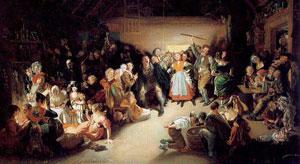
Halloween is always a favorite time for children and adults, alike. This holiday is celebrated the world over by many different cultures, but some misconceptions about the holiday exist, including the belief that it’s an evil day, but that isn’t the case. Do you know where Halloween came from? Do you know what all of the traditions mean?
Halloween as we know it in America today gets its roots from the ancient Celtic holiday called Samhain. Samhain (pronounced sow-in) was a harvest festival, and celebrated the start of the Celtic New Year.
Celts believed that November 1, began the cold, dark winter season, and several of the rituals performed by the Druids (Celtic priests), were used to find prophecies that would bring comfort and peace of mind to the people throughout the winter, which typically saw many deaths. Many believed that Samhain was a festival of darkness, and countered Beltane, the festival of light and fertility, which took place in the beginning of May each year.
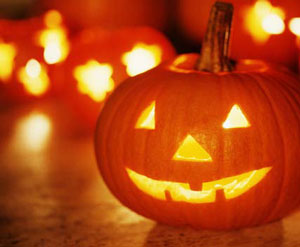 In addition to celebrating the harvest, which is where we get the pumpkins, and apples in our Halloween traditions today, the evening of October 31, the last day of the year, is when many believed the veil between this world and the afterlife became blurred, and the spirits of the past came back to earth to cause general mayhem, because after all, the spirits had to celebrate too.
In addition to celebrating the harvest, which is where we get the pumpkins, and apples in our Halloween traditions today, the evening of October 31, the last day of the year, is when many believed the veil between this world and the afterlife became blurred, and the spirits of the past came back to earth to cause general mayhem, because after all, the spirits had to celebrate too.
During the celebration, the Celts dressed up in animal skins, and tried to read each other’s fortunes, which is where the tradition of costumes originated, but another theory is that we dress in costumes to confuse the evil spirits that are come through the veil with the good ones.
During Samhain, they extinguished every fire in every hearth. The celebration lasted from sundown on October 31, until sundown on November 1, when they re-lit the hearths from the Druids sacred bonfires to bring protection throughout the winter.
Neo-pagans still celebrate Samhain today. Druids and Wiccans conduct many of the same rituals as the Celts did 2000 years ago. One tradition that remains popular is the Dumb Supper. This ritual involves leaving a meal for the ancestors to partake. Some set a place at the table during the regular meal, while others leave the food out for the ancestors overnight. It varies by the individual.
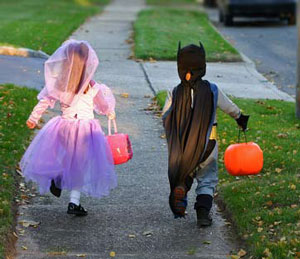 As immigrants began to flood into America in the 1800’s, the celebration and traditions we associate with Halloween began to take shape. During this time, the tradition of trick-or-treating evolved. Young women would try to divine the name of a person’s future love, and children would go house to house, much as they do today, and ask for food, however in those days, it rarely came in the form of candy.
As immigrants began to flood into America in the 1800’s, the celebration and traditions we associate with Halloween began to take shape. During this time, the tradition of trick-or-treating evolved. Young women would try to divine the name of a person’s future love, and children would go house to house, much as they do today, and ask for food, however in those days, it rarely came in the form of candy.
The holiday continued to evolve, and many attempted to make it more of a family and community celebration, while trying to remove all of the superstitions and “ghoulishness” from the holiday. Eventually however, thanks to the baby boom in the 1950’s, the practice of trick-or-treating was revived as a way for large and growing communities to celebrate the holiday inexpensively, and to combat vandalism, which had become a problem on Halloween night. The idea was that if you provided candy treats to the youngsters in the neighborhood, you wouldn’t get your home vandalized. The idea worked, and Halloween continues to grow into a multi-billion dollar business that is the second largest holiday in the America.
Mexico, Latin America, and Spain
In the Spanish speaking countries of the world, they call Halloween, Dia de los Muertos, which translates to “Day of the Dead.” This is a little bit misleading however because the festival for the dead actually lasts three days, typically, what the Catholic church called All-Hallowmas, began on the eve of All Saints Day on October 31, which they then celebrated on November 1, and All Souls Day on November 2. Most Spanish speaking countries are predominately Catholic.
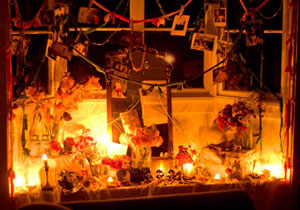 During Dia de los Muertos, an alter containing photographs, candles, incense, food, drinks, candies, and flowers is built by family members.
During Dia de los Muertos, an alter containing photographs, candles, incense, food, drinks, candies, and flowers is built by family members.
The belief is that the candles and incense help loved ones find their way back home, while the remaining items on the alter provide the loved ones’ with all of their favorite things when they return. Some will even leave a washbasin and towel so that the spirit can bathe before partaking in the feast.
During this time, family members clean the graves of their loved ones, make any necessary repairs, and decorate the grave with flowers and paper streamers. Often, a picnic at the gravesite includes tequila and mariachi bands while relatives reminisce about those who died.
England
Before Martin Luther’s Protestant Reformation, England celebrated Halloween with the same general mischief as the ancient Celts, but thought of it as a religious holiday, the eve of All Saints Day. They lit bonfires and carved beets and pumpkins into funny faces, and because of superstition, they threw objects into the bonfires as well. For example, if a person threw a stone into the fire, and it disappeared from the ashes upon a later search, they believed the person would die within the year. If a young couple threw nuts into the fire and they exploded, it meant they would have a troubled marriage.
However, after the Protestant Reformation, most Halloween festivities ceased. Protestants did not believe in saints, and did not celebrate a day viewed as the eve of All Saints Day. Recently, American style festivities of costumes and trick-or-treating have become more popular in England, though it confounds some of the older generation who don’t know why costumed children are knocking on their doors asking for treats.
China
China celebrates a Halloween festival called Teng Chieh, which includes placing food and water in front of the photographs of departed loved ones, and lighting lanterns to illuminate the way home. Buddhist worshippers build “boats of the law” to burn at night in memory of their loved ones, as well as to free the spirits of those who died in an accident that did not allow family members too properly bury the body. Buddhists believe that having these spirits in the community is dangerous, so monks will recite sacred prayers and give offerings to the spirits to set them free.
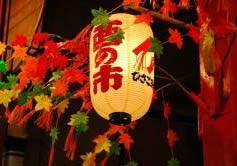 Japan
Japan
Japan celebrates a festival similar to Halloween called Obon Matsuri (Japanese for festival), Obon, or Bon as it is more commonly known, takes place anywhere from July through September, depending upon the region.
The traditional activities of Obon Matsuri are very similar to those held during the Spanish countries celebration of Dia de los Muertos. Families traditionally have reunions to celebrate their ancestors, and they gather to care for the graves.
One unique feature of Obon Matsuri is the Bon Odori (Japanese for dance). Possibly the most visible display in popular culture of this dance was seen in the movie “Karate Kid II,” at the Bon Dance in the castle. Unlike other festivals in Asian countries, the Japanese Obon Matsuri is more upbeat and celebratory than the more somber ceremonies seen in places such as China.
During Obon Matsuri, they light red lanterns and “welcoming fires” to guide ancestors to their family’s home. At the end of the festival, they light “send off fires” to help the ancestors find their way back to their graves.
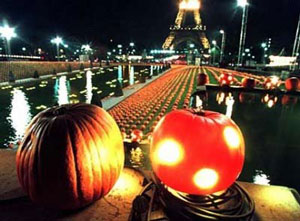 France
France
In 1982, a bar in Paris celebrated its first Halloween, but they had to explain to all of their patrons what the party was about and why it included costumes.
In 1992, the Mask Museum opened in Saint-Hilaire-Saint-Florent, and began widely promoting the holiday. Since then, more and more of the French people are familiar with Halloween. It is unclear if Halloween will become a fixture in the country however, since it’s viewed as a largely American holiday and the country currently holds a strong anti-American sentiment, many of the French boycott anything they think is American.
In 1996, the tradition of Halloween was again revived and became more widely known in France, when the village of Saint Germaine-en-Laye held its first Halloween party on October 24, in the middle of the day. Although the village missed the part about Halloween being a nighttime event, it gave the people in Saint Germaine-en-Laye a taste of the traditions of Halloween.
So, when you and your family go trick-or-treating this year, or go to a local party, don’t forget where Halloween came from, remember your ancestors, and show gratitude for the bounty you’ve received After all, that is the true meaning of Halloween.
Sources:
http://www.history.com/topics/halloween
http://www.novareinna.com/festive/world.html
http://www.ladyoftheearth.com/sabbats/oct-lore-2.txt
http://www.pumpkinpatchesandmore.org/halloweenglobal.php

Comments
Halloween is more than Candy
it's definitely interesting to see the different cultures that celebrate this time of year. You know, i don't think a lot of people are educated about this holiday, it's more of the money that the stores make to advertise this holiday and sell candy, decorations, and costumes that really "make" the holiday. And that's very unfortunate. The Mexican/Latino culture and their "Dia De Los Muertos" is such a fascinating part of their culture. I learned a little more about that while taking Spanish classes in the past, and it's such a different experience than just "trick or treating." I think a lot of the holidays now are just about stores making money and selling decor. Money is a big reason why people don't just stick to knowing the history and roots of a holiday (i believe.) People get so materialistic they forget why the holiday is actually a holiday.
Halloween Across the World
Halloween is one of my favorite holidays. I think it is so fun that there is a national holiday when you dress up and eat candy. But, I never knew where the holiday orginated from or why we celebrated it. The explanations of the different practices surrounding this holiday were very interesting. I really enjoyed reading about the different traditions that other cultures have when celebrating the holiday. I don't think that many people know how this holiday came to be or how other cultures around the world practice it. Many cultures affiliate Halloween with the spirtiual world. These cultures practice traditions that involve celebrating those who have passed away. I think that on Halloween, people should see how different cultures practice the holiday. This would break barriers, showing that although different cultures practice differently, there are many similarities. I think it is important to recognize the different customs and traditions that different cultures have when celebrating holidays, this knowledge would help bring us all a little closer.
Response
Halloween is one of my favorite holidays and I am glad to see that other countries celebrate it. It is interesting to see all of the different traditions and beliefs of the other countries regarding the idea of Halloween. Halloween in America should not just be dressing up and getting candy. We should celebrate more of what the holiday was supposed to bring. I personally like China's tradition of displaying loved one's pictures for everybody to see. They do this to celebrate the life of that person. Halloween is a holiday for the dead anyways. But, everybody has their own ideas and own beliefs and that's what makes people or a country unique. If everybody celebrated the same holidays at the same time the same exact way that would be boring.